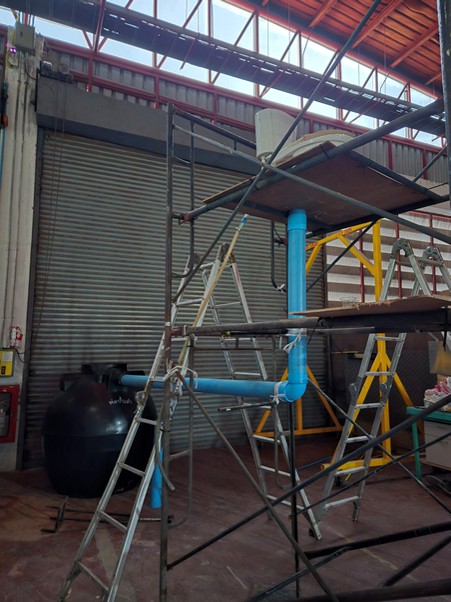Modelling sludge accumulation and hydrodynamic conditions in a commercial package plant (Thailand)

In households, especially in developing countries, blackwater and greywater are often treated in septic tanks and other onsite sanitation facilities. This study aims to determine desludging intervals by analyzing hydraulic behaviors and examining the relationship between sludge accumulation depth and its impact on effluent solid concentrations within a 1,200-liter commercial package system (septic tank). The study began with CFD simulations using ANSYS Fluent to analyze the tank’s velocity profiles and flow behaviors at different sludge depths: 0%, 50%, and 60%. This study found that beyond 50% of tank volume significantly affected flow dynamics, increasing velocity in the tank and deteriorating effluent quality. Following the CFD analysis, a system dynamic model was developed using STELLA to predict sludge accumulation at the critical threshold of 50% tank capacity and effluent solid concentrations over time. Parameters such as Total Solids (TS), Total Dissolved Solids (TDS), Total Suspended Solids (TSS) and Total Volatile Solids (TVS) were incorporated. Experimental data from the laboratory and three existing models were used to validate the model, achieving a high accuracy with an R2 value of 0.99. Treatment efficiencies for TS, TDS, TSS, and TVS were determined at 64.5%, 35.9%, 87.9%, and 79.9%, respectively. The model recommended desludging intervals of five years for single-person households, 3.2 years for three-person households, 1.8 years for five-person households, and one year for eight-person households. The research findings support valuable insights for optimal desludging intervals and enhancing the sustainability of onsite sanitation systems, particularly in the context of commercial package systems.

